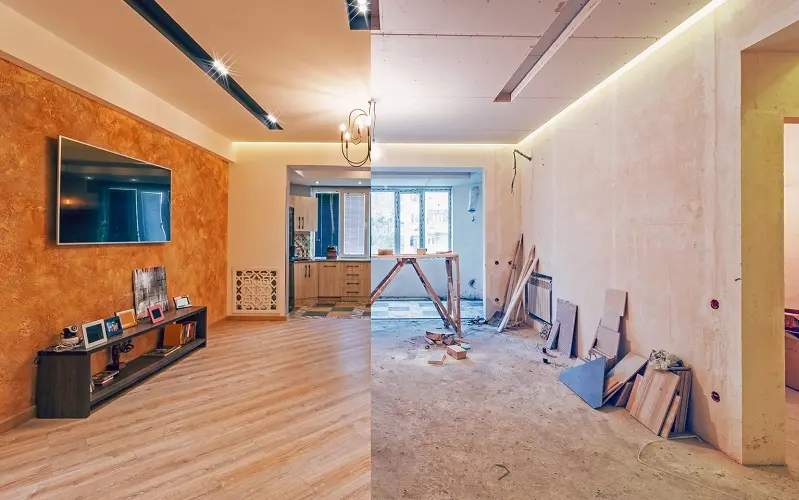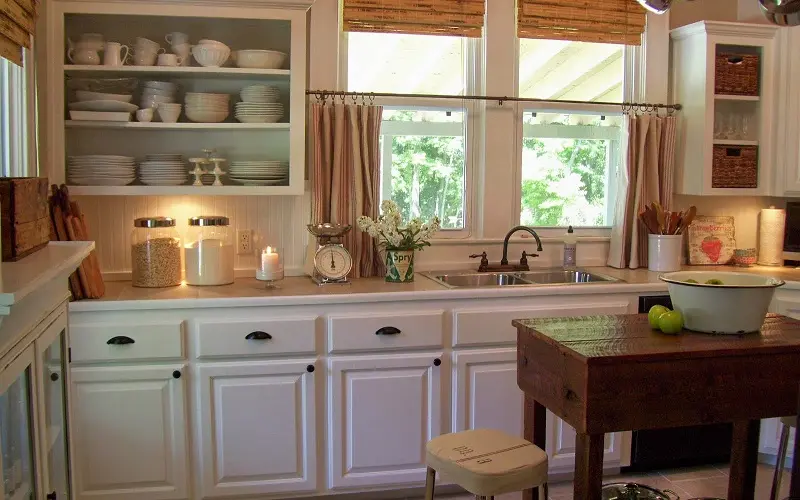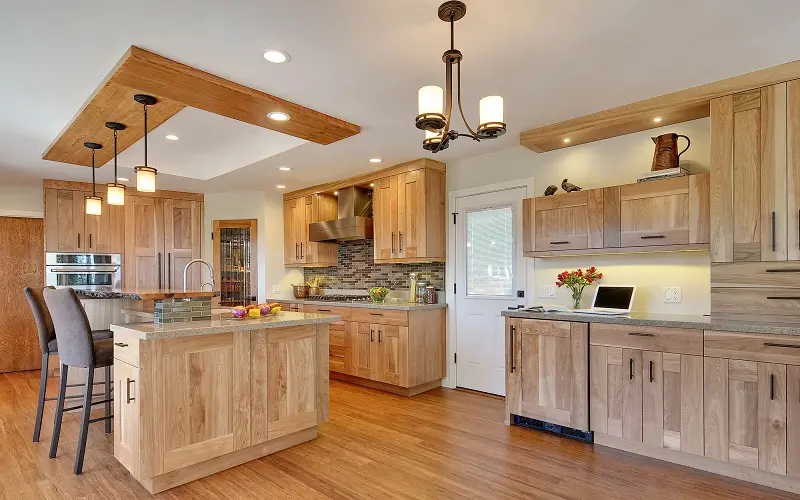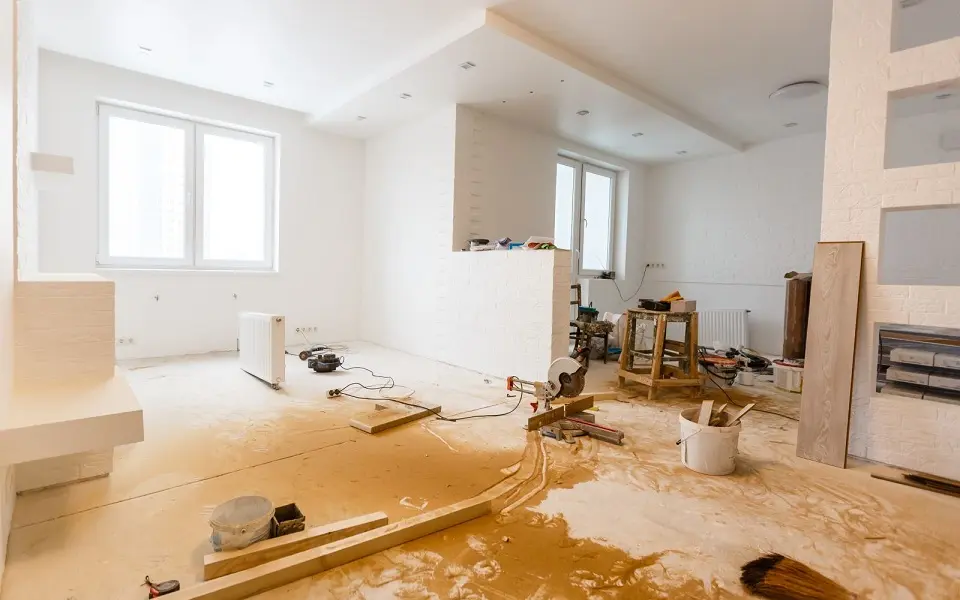Welcome to the ultimate competition in the world of home remodeling: remodel vs renovation. Picture this: your beloved space is in need of a transformation.
The possibilities are endless, but which path should you choose? Embark on an exciting remodel, breathing fresh life into the space around you. Or do you want to choose the path of renovation, preserving the soul of the space?
It is not just a discussion. It’s a journey through creativity, innovation, and the art of reinvention. Join us for a nuanced exploration.
You’ll be able to explore the challenges and celebrate the triumphs of these two titans of transformation. Prepare to be inspired.
You will be informed and empowered to make the right choices for your unique vision. Revitalize and thrive. The fight is on!
The Difference Between Renovating and Remodeling

Repair and remodeling are two terms that are often used interchangeably. And they both work in the home improvement industry. However, they imply different approaches and results.
A renovation process generally involves restoring or repairing an existing room. That is, you are not making significant structural changes.
It’s like tweaking the exterior of a room. You can freshen it up by updating fixtures, finishes, or surfaces. In doing so, you will maintain the basic layout.
In contrast, a remodeling process is a more extensive undertaking. It involves changing the structure, layout, or function of the room.
You do this to create something completely new. Think of it as a complete remodeling. It involves tearing down walls, reconfiguring rooms, and rethinking the design. You are doing it to suit your changing needs and preferences.
Essentially, the difference between renovating and remodeling is in the mashup. Renovating is rejuvenating and preserving, while remodeling is rethinking and transforming.
Understanding the difference is crucial when embarking on a project. All because it determines your space’s scope, budget, and ultimate vision.
The Renovation Process

So, we invite you to take a closer look at this process. Renovation is the process of updating or improving an existing room.
But you mustn’t change its fundamental structure. It includes tasks such as:
- Painting
- Renovating floors
- Replacing light fixtures
- Closets
- And so on.
Examples of renovation projects can range from updating a tired kitchen with new countertops and backsplash to giving a bathroom a modern look with new tile and fixtures.
You can renovate when a room looks outdated. For example, if it is not functional enough but does not require major structural alterations, It is a cost-effective way to improve aesthetics and functionality.
It makes it an ideal choice for homeowners looking for a cosmetic update rather than a major renovation.
The Remodel Process

Remodeling is the comprehensive process of making significant structural and functional changes to an existing space.
You create an entirely new layout or design. An example would be turning an enclosed kitchen into a cooking area with an open concept.
Or, for example, converting an attic into a modern bedroom. Or it’s combining two small rooms to create a spacious master bedroom.
The remodeling process is chosen when homeowners want to completely change their living space. You can often choose this option to adapt the building to a changed lifestyle.
You may be able to increase the value of the property or eliminate design flaws. This massive undertaking requires careful planning and a larger budget.
And often, this is where you may require professional help because of its complexity. Remodeling is ideal for those who want to make significant changes to their home.
Cost and Value Difference
The key difference between cost and value in home improvement is their perspectives and outcomes.
Cost refers to the financial outlay or expense required to complete a project. It includes costs such as:
- Material costs
- Labor costs
- Obtaining permits
- As well as any unexpected or hidden costs.
Cost is a concrete, quantifiable figure. And it affects your budget. Value, on the other hand, is the perceived usefulness or benefit of a project.
It includes the impact on aesthetics, functionality, and estimation. Value is more subjective and can vary depending on individual preferences.
The difference between renovating and remodeling is price and value. Pay attention to these factors, too. Finding a balance between these two aspects is crucial.
Return on Investment

Return on investment (ROI) is the most important metric in the home improvement industry. It measures the financial benefit of a project relative to its cost. It measures how effectively your investment translates into increased property value.
A positive ROI means that the project has increased property value for homeowners. It is a desirable outcome, especially when it comes to resale value.
Projects with high ROI often include kitchen and bathroom remodeling, attic conversions, or energy-efficient upgrades because they attract potential buyers and justify a higher listing price.
However, it is important to remember that ROI can vary. Not all remodel or renovation work guarantees a significant ROI.
Therefore, careful planning and research are essential to maximizing your return on investment. You will be able to make informed decisions about which projects to pursue.
Remodel vs Renovation: Which Is Right for You?
Deciding what is right for you depends on your specific goals, your budget, and the condition of the space.
Remodeling is appropriate if the space is in decent structural condition. You simply want to update its appearance and functionality.
It’s a cost-effective choice for giving a room or area a facelift, often involving surface updates like painting, new fixtures, or refinishing.
Remodeling is the best choice if you are looking to make significant changes. Are you unhappy with the room’s layout, functionality, or general atmosphere?
Then, renovation allows you to make structural changes. This option is more complex, requiring a larger budget and professional help. Consider your long-term goals, budget constraints, and the extent of change you desire.
It’s also essential to research local real estate trends and consult with professionals to ensure your decision aligns with your property’s potential value and your personal vision for your home.

